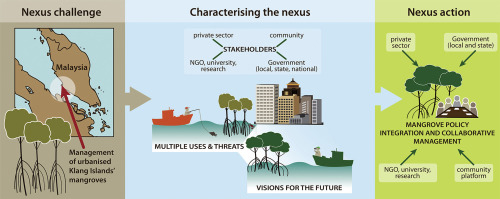Summary Project (in progress)
SUMMARY
Coastal ecosystems are among the most productive and diverse ecosystems on the planet, hosting about 80% of the 13,200 known marine fish species. As demand for fish protein grows, there is an increasing need to manage coastal fisheries effectively using accurate fisheries diversity information, including what, where, and when species are present. Scientific knowledge of fish distributions is not always current or complete because conventional surveying tools have limitations in capturing highly migratory species, and sampling methods can be destructive and expensive. New surveying methods that are rapid, robust, non-destructive, and affordable are needed to improve fisheries management. One promising new technology collects traces of organismal DNA in the environment and uses DNA sequences to provide identification. Such DNA sources are referred to collectively as environmental DNA (eDNA), and include whole microorganisms, cellular materials such as tissue, feces, or scales, and free DNA released from cytoplasm. PCR-based eDNA methods include q-PCR for single species quantification and eDNA-metabarcoding for community analysis. The former approach relies upon taxon-specific primers to generate quantitative information on taxon-specific genes, an index of taxon abundance; the latter combines DNA-based identification with high-throughput, next-generation sequencing to characterize complex communities. Current methods for monitoring marine fish (including bony fishes and elasmobranchs) diversity mostly rely on trawling surveys, which are invasive, costly, and time‐consuming. Moreover, these methods are selective, targeting a subset of species at the time, and can be inaccessible to certain areas. Here, we used environmental DNA (eDNA), the DNA present in the water column as part of shed cells, tissues, or mucus, to provide comprehensive information about fish diversity in a large marine area.
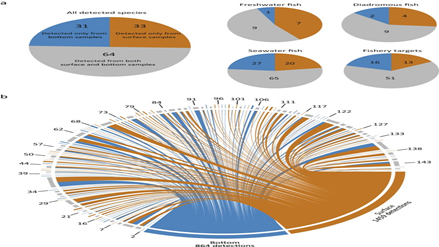
SUMMARY
Polyunsaturated fatty acids (PUFA) are of the utmost importance for human metabolism. They are the major components of cell membrane phospholipids, and may also be present in cellular storage oils. In addition, PUFA are used in the biosynthesis of eicosanoids, hormone-like signaling molecules, which include thromboxanes, prostaglandins and leukotrienes. Considering their fundamental role in metabolism, it comes as no surprise that beneficial properties have been attributed to PUFA, like antibacterial, anti-inflammatory, antioxidant, prevention of cardiac diseases, and inhibition of tumor progression. Such properties are indicative of the potential of PUFA for nutraceutical and pharmaceutical purposes. Almost all of the required long chain unsaturated fatty acids are synthesized by vertebrates through several elongation and desaturation steps. The exceptions are α-linolenic acid (ALA) and linoleic acid (LA). These precursors for the biosynthesis of all other n-3 and n-6 PUFA cannot be synthesized by vertebrates and must, therefore, be present in diet, hence their classification as essential. Humans can convert ALA to eicosapentaenoic acid (EPA) and docosahexaenoic acid (DHA); however, very long chain polyunsaturated fatty acids (VLCPUFA; >C18) are only synthesized to a limited extent: 8% and 21% for EPA and 4% and 9% for DHA in men and women, respectively. Hence, in addition to the essential fatty acids, VLCPUFA must also be taken through dietary means or direct supplementation in order to meet with the European recommendations (European Food Safety Agency: EPA + DHA 250 mg/day).
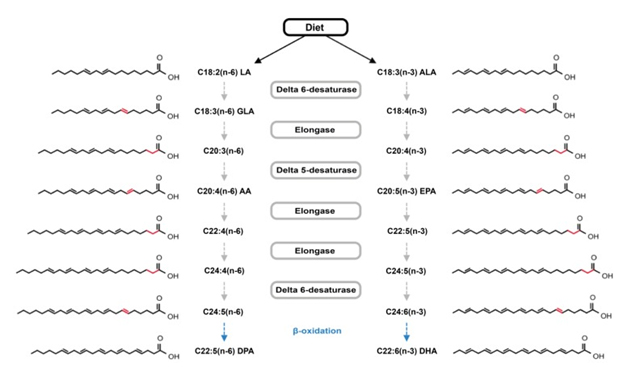
SUMMARY
Seafood plays a critical role in global food security, providing essential nutrition for more than one billion people and livelihoods for some 57 million. Aquaculture’s importance and growing contribution to the seafood sector is irrefutable. As the world’s fastest growing food production system, aquaculture has become the predominant source of fish protein, surpassing the amount of seafood produced for direct human consumption from wild-caught fisheries. Aquaculture is suitable throughout much of the world and, coupled with its relative sustainability compared to other animal protein production methods, particularly from a carbon emissions perspective, the potential for increased farmed seafood production is immense. Despite its successful growth and potential, aquaculture is not consequence- or impact-free. With the rapid expansion of aquaculture in the past three decades — often in under-managed or underregulated environments — the industry has experienced boom and bust cycles and acquired a negative reputation for its associated environmental impacts, particularly in Western markets. The direct environmental impacts of aquaculture are well-documented and include habitat loss in critical ecosystems (e.g., mangroves and wetlands), nutrient loading that contributes to poor water quality, the introduction of invasive species, and the spread of disease. These impacts can have severe ramifications, but can often be addressed by proper and effective management of the aquaculture industry.
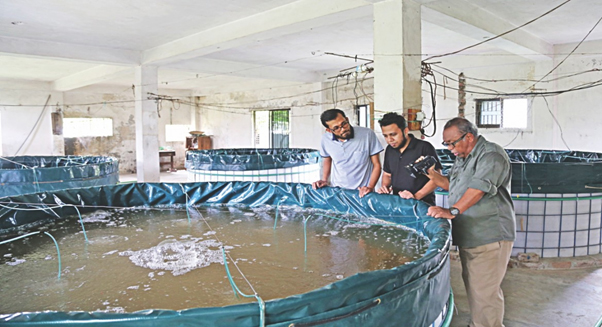
SUMMARY
Date palm counts among the oldest fruit crops of the world and is mainly cultivated for its highly nutritious fruits consumed as a staple food in many countries, especially in the Gulf region. Dates are enriched with numerous therapeutic bioactives and functional compounds such as phenolics, flavonols, carotenoids, minerals, and vitamins that not only provide an appreciable amount of energy required for the human body but also act as an effective therapeutic agent against several diseases. This project aimed to provide a deep insight into the nutritional as well as phytochemicals profile of date fruit and its seeds in order to explore their biological (anti‐cancer, anti‐diabetic, cardio‐protective, anti‐inflammatory properties), functional food, and nutra‐pharmaceutical attributes.
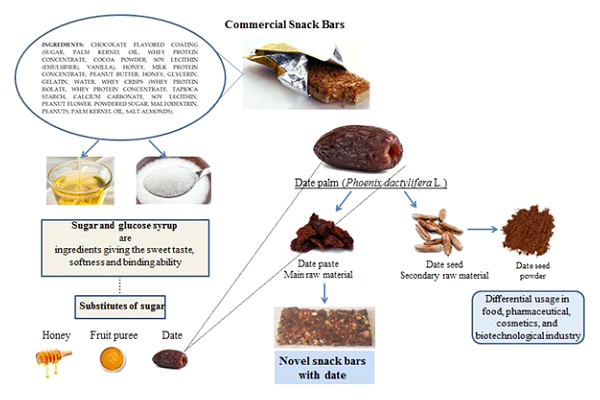
SUMMARY
Mangrove forests in Peninsular Malaysia are found mainly on the sheltered coasts, estuaries, rivers and some near-shore islands. Mangrove forests support a diverse range of animals and plants and are important breeding ground for a vast array of organisms. The importance of mangrove forests in providing invaluable goods and services both in economics and environmental terms are well understood and documented. Forestry Department Peninsular Malaysia (FDPM) has been keeping abreast with current issues at the national, regional and international levels in managing the mangrove forests. FDPM has always been fully committed to the implementation of the sustainable forest management practices and in line with current concerns such as climate change, conservation of biological diversity and natural calamities including tsunami, have brought about a heightened expectation to the forestry profession. The policy and management of mangrove forests have great impacts on the political, social, economic, ecological and environmental well- being of the country, and thus managing mangrove forests is very challenging to the department. Mangrove forests management system has undergone changes from merely managing for its wood produce, to a management system that incorporates multiple roles, protection and conservation. Systematic management of mangrove forests started as early as 1904, with the adoption of the first working plan for Mangrove Forests in Matang. The Matang mangroves are identified as the best described mangrove forests in the world and is an exemplary of the sustainable managed mangrove forests. The Matang mangroves is in its third ten-year period of the second rotation, and after more than 100 years of management, the forest is still intact, providing sustainable various goods and services. This in itself is a manifestation of the success of forest management practices that aptly earned Matang mangroves as the best managed mangrove forests in the world. Special emphasis to the protection of the mangrove forests is enshrined in the National Forest Policy 1978 (revised1992) and duly recognized and given specific attention in the National Forestry Act 1984 (revised 1993). Future management of mangrove forests in Peninsular Malaysia will adopt an integrated approach by further refining the current management approach and incorporating latest findings and updated information through more vigorous R&D, scientific expeditions and studies on mangrove forests. A paradigm shift to conserve biodiversity even in the management of production mangrove forests will be emphasized. The National Forestry Policy and other policies related to mangrove forests need to be revised from time to time to match prevailing conditions and requirements, to ensure the realization of its multi-functions in perpetuity. The success in the sustainable management of mangrove forests by FDPM has in fact contributed to the sustainability of the Wetlands in Malaysia which is crucial to the survival and future health of the earth too.
